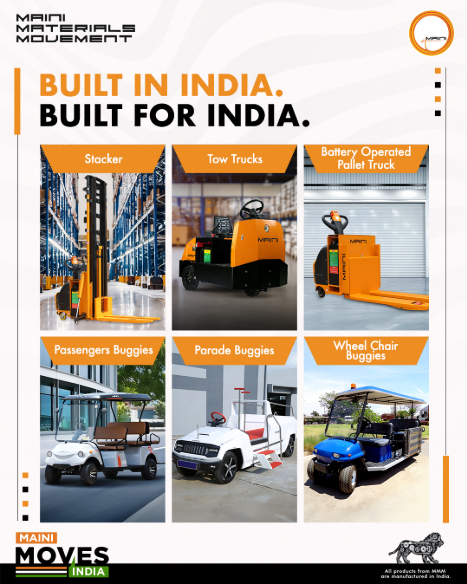In today’s fast-paced business environment, warehouses form the backbone of supply chains. Whether dealing with raw materials, finished products, or fragile goods, the success of any warehouse largely depends on how efficiently it can move, store, and protect its inventory. This is where material handling equipment becomes indispensable.
Companies like Maini Materials Movement Pvt Ltd Bangalore have long been developing advanced solutions to make warehouses safer, smarter, and more efficient. Their diverse range of handling tools—from forklifts to electric carts—ensures that businesses can meet modern logistical challenges with ease.
Let’s explore some of the essential material handling equipment that every warehouse should invest in.
1. Forklifts – The Core of Heavy Lifting
No warehouse can function effectively without forklifts. Designed to lift and transport heavy loads, forklifts are the foundation of warehouse logistics. They save time, reduce manual labor, and enhance workplace safety. Modern forklifts, especially electric variants, are compact, energy-efficient, and ideal for indoor operations.
2. Pallet Trucks and Stackers – Compact and Versatile
For lighter loads and smaller spaces, pallet trucks and stackers are excellent alternatives. Pallet trucks allow easy movement of goods on pallets across short distances, while stackers help in lifting and arranging loads vertically. These are particularly useful for warehouses that need to optimize storage in limited floor areas.
3. Platform Trucks and Tow Trucks – For Efficient Movement
Large warehouses often require moving bulk goods or multiple pallets at once. Platform trucks simplify this by providing a flat surface for easy loading and unloading. Tow trucks, on the other hand, can pull multiple trolleys in one go, improving workflow efficiency. Together, they reduce dependency on manual labor and improve productivity.
4. Dock Levelers and Lift Tables – Smoother Transitions
The loading dock is one of the busiest and most accident-prone areas of a warehouse. Dock levelers bridge the gap between trucks and the warehouse floor, making loading and unloading quicker and safer. Lift tables, meanwhile, adjust the height of materials to suit the task, reducing strain on workers and minimizing injury risks.
5. Electric Carts and Utility Vehicles – Modern Mobility
As warehouses grow larger, the need for faster internal transport has increased. Electric carts have emerged as an efficient solution for moving people, tools, and smaller loads. The Maini golf cart is a great example of how such vehicles can enhance mobility in warehouses, factories, and campuses. Not only are they eco-friendly, but they also reduce worker fatigue, making operations smoother and more sustainable.
Choosing the Right Equipment
Not all warehouses have the same requirements. A small warehouse might manage well with pallet jacks, forklifts, and basic racks, while larger distribution centers may need advanced systems like conveyors, AGVs, and electric carts.
That’s why working with industry leaders like Maini Materials Movement Pvt Ltd Bangalore is beneficial. Their wide range of products—from stackers and tow trucks to innovative mobility solutions—helps businesses customize equipment to their specific needs.
Final Thoughts
The right mix of material handling equipment directly impacts productivity, worker safety, and overall efficiency in a warehouse. Forklifts, pallet trucks, conveyor systems, dock levelers, storage racks, and electric carts all play critical roles in streamlining operations.
With technological advancements and eco-friendly options like the Maini golf cart, warehouses are now better equipped than ever to meet modern logistics challenges. Investing in reliable equipment is not just about moving materials—it’s about creating a smarter, safer, and more efficient supply chain.





Comments